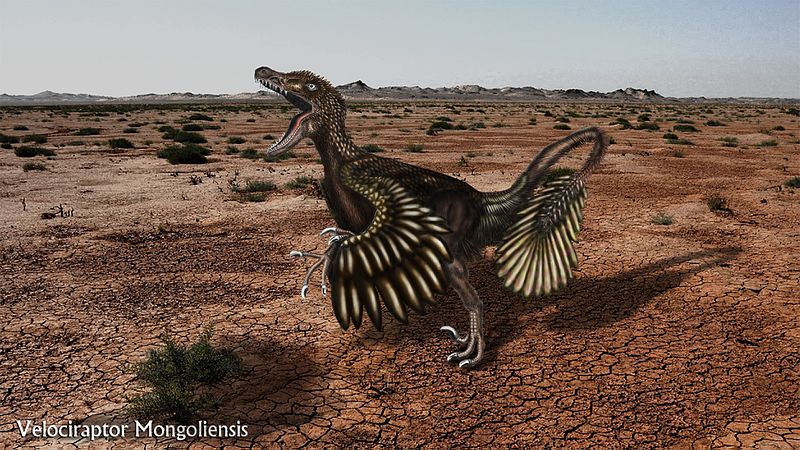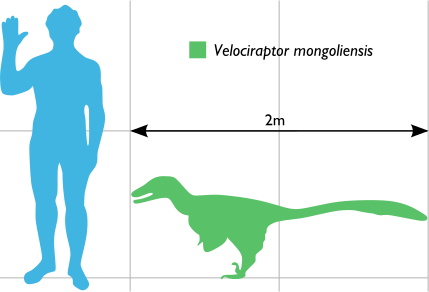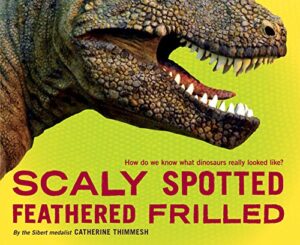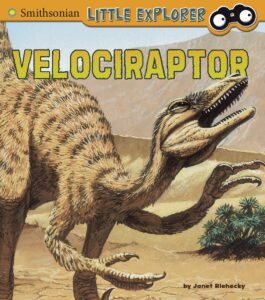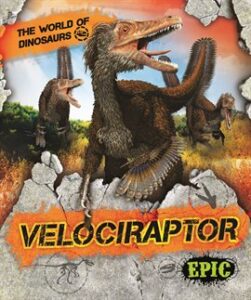LIBRARY BLOG
National Velociraptor Appreciation Day
April 18th

April 18th is National Velociraptor Awareness Day! Yes, in the year 2021 we have an awareness day for a dinosaur that hasn’t roamed the earth in over 70 million years. So, why is it a thing? Because we just adore velociraptors! Their boost to fame in the ‘90s caused a tidal wave of love for the long extinct dinosaur.
Dinosaurs of a Feather
Velociraptors had feathers! Hollywood’s fascination with velociraptors all started with the famous Jurassic Park movies, but the dinosaur was not accurately depicted in the films. After finding quill knobs on a fossil, scientists now believe velociraptors had feathers, similar to a modern-day bird. However, these feathers did not aid the velociraptors in flying, gliding, or even hovering—scientists believe the feathers were possibly there to regulate the dinosaur’s body temperature, attract mates, and even protect eggs.

The Original Roadrunner
The name velociraptor comes from two Latin words—one meaning “speedy” or “swift” and the other meaning “thief” or “robber.” The name “speedy thief” really shows the nature of these meat-eating predators!
Not Man’s Best Friend
Velociraptors weren’t THAT big! They weighed between 30 – 40 pounds. That’s the same weight as most medium-sized dogs! Velociraptors grew to be about 2 – 3 feet tall and 5- 6 feet long, estimates put the velociraptor at the size of today’s turkey.

Speed Racer
The top running speed of a velociraptor is estimated to be 40 miles per hour! Animals today that can also run at a top speed of 40 miles per hour are ostriches, large dogs and cats, and horses. Today, the fastest animal on land is the cheetah, which can reach speeds of 80 miles per hour!
Recommended Books
Sources
Britannica, The Editors of Encyclopaedia. “Velociraptor”. Encyclopedia Britannica, 16 Mar. 2020, https://www.britannica.com/animal/Velociraptor. Accessed 8 March 2021.
Castro, Joseph. “Velociraptor: Facts About the ‘Speedy Thief’.” LiveScience, Purch, 18 Mar. 2016, www.livescience.com/23922-velociraptor-facts.html.
“Rethinking Velociraptor.” Natural History, vol. 116, no. 10, Dec. 2007, p. 69. EBSCOhost, search.ebscohost.com/login.aspx?direct=true&db=a9h&AN=27586672&site=ehost-live.
-Emily Duplantis, Youth Services Clerk

